Opinion & Analysis
Wishon: “What shaft flex should I use?”

Let’s start our discussion by making one thing clear. There’s a lot to fitting the flex and bend profile of shafts — enough to write a whole book.
In asking me to write about the fitting of each of the key specs of golf clubs, GolfWRX in essence gives me a “1-pound bag” each week to offer information about each fitting spec. Covering everything about shaft flex and bend profile would be like trying to put 100 pounds of stuff into that 1-pound bag!
For those who are really into knowing as much as possible about flex and bend profile fitting in shafts, I recommend you read the three-part series I wrote for GolfWRX some time ago.
Related
- Part 1 — Taking the guesswork out of selecting shafts
- Part 2 — Taking shaft fitting from guessing to specifics
- Part 3 — Facts about shafts: What they do
For those who may not be that familiar with fitting for FLEX and for BEND PROFILE, fitting for the flex is a matter of finding a shaft with the correct swing speed rating for the golfer’s clubhead speed AND transition/tempo, while fitting the bend profile involves matching the tip stiffness design of the shaft to the golfer’s point of release.
Of all the points that an experienced club fitter has to evaluate to do a good job in the fitting of flex and bend profile, the most important one is to have accurate shaft bend profile measurement and swing speed rating data on the largest possible population of shaft models and flexes. This is because there are no standards for the flex of a shaft in the golf industry. Each golf company and shaft company is free to decide how stiff any of their letter flex codes on their shafts are to be. As such, the R flex from one company can be of the same stiffness as the S flex from another company or the A flex from a third.
Without access to a large data base of actual stiffness and swing speed rating measurements for shafts to be able to clearly know and compare the stiffness design of shafts, fitting for flex and bend profile is a matter of time consuming and frustrating trial and error. Period.
The following bend profile data graph is simply offered as an example of the type of shaft stiffness measurement data required to take shaft flex/bend profile fitting from a trial-and-error process to one of clear, succinct organization. This example graph will also prove the point about the confusion in flex due to a lack of standards in the industry.
Each of the five shafts in this graph are labeled and sold as S-flex shafts. The stiffness measurements represent a range of three full flexes, or stated another way, represent a swing speed rating difference of more than 30 mph.
With such data, the flex and bend profile fitting analysis follows these procedures:
1. Accurately measure the average clubhead speed of the golfer with a driver and a 5- or 6-iron.
2. Observe the golfer’s downswing transition and tempo and evaluate it as either:
A) Smooth/gradual/passive with little sense of acceleration.
B) Average, with some sense of force and acceleration from the transition through the downswing.
C) Forceful and aggressive, as if the golfer cannot wait to pour on the coals to accelerate the club to impact.
In simple terms, the club fitter is observing whether the golfer is more of a swinger (A), a definite hitter (C) or somewhere in between (B) with his downswing transition and tempo.
3. Observe the golfer’s point of release (i.e. the point at which the golfer begins to unhinge the wrist-cock angle on the downswing as either (1) early, (2) midway, (3) later, or (4) very late. Another way to evaluate this is to reference the point of starting the release to the hour numbers on a clock while facing the golfer.
- (1) Early: 11 to 9:30
- (2) Midway: 9:30 to 8:30
- (3 Later: 8:30 to 7:30
- (4) Very Late: 7:30 to 6:30
4. Choose shafts of the correct weight (see my story on shaft weight/total weight), which have a swing speed rating that matches to the golfer’s clubhead speed and an adjustment for their transition and tempo evaluation with a tip stiffness design that matches the golfer’s point of release.
We will use an example of a golfer with a 100 mph driver clubhead speed. The up or down adjustment in the swing speed rating and tip stiffness recommendation is the same for all other clubhead speeds.
The above procedures are done to give the club fitter A STARTING POINT for shaft flex and bend profile fitting. Suitable candidate shafts are chosen by the club fitter from which the test club hitting process begins.
Again, because the best club fitters are superb multi-taskers during the test club sessions for flex and bend profile, the club fitter is also testing for shaft weight, swing weight and continually asking the golfer for feedback with each change of head weight or shaft.
Without question, the matter of ADVANCED PLAYER SHAFT FLEX/BEND PROFILE FITTING must also include an evaluation of the golfer’s preference for feel elements and shot shape/performance related to the flex/bend profile. Experienced club fitters will ask the golfer to provide the names of shafts the golfer has used, along with the golfer’s feedback of too high, too low, good flight, too stiff feeling, too flexible feeling, just right feeling, etc.
With this information, the club fitter will access his database of shaft stiffness measurements to study as many of the golfer’s previous shafts and compare the stiffness measurements. Through this process, the club fitter will be able to know what the actual stiffness measurements are for each shaft model feedback opinion from the golfer. From this the club fitter will have a very clear picture of what the stiffness measurements need to be to best satisfy the golfer’s feel and shot shape preferences.
Again, with the right database of shaft stiffness measurements, the process of flex and bend profile fitting becomes a very organized, very orderly, and very accurate process. Without such information, shaft flex and bend profile fitting will forever be a matter of trial and error.
Related
- What length should your clubs be?
- What lofts should your clubs be?
- Face angle is crucial for a proper fitting
- The best way to fit lie angle
- How to choose the right club head design
- Tom Wishon’s keys to set makeup
- Getting the right size grip, time after time
- What shaft weight should you play?
- What swing weight should your clubs be?
- What shaft flex should I use?
This story is part of a 10-part series from Tom Wishon on professional club fitting.
- LIKE255
- LEGIT38
- WOW19
- LOL5
- IDHT1
- FLOP7
- OB2
- SHANK10
Opinion & Analysis
The Wedge Guy: What really makes a wedge work? Part 1

Of all the clubs in our bags, wedges are almost always the simplest in construction and, therefore, the easiest to analyze what might make one work differently from another if you know what to look for.
Wedges are a lot less mysterious than drivers, of course, as the major brands are working with a lot of “pixie dust” inside these modern marvels. That’s carrying over more to irons now, with so many new models featuring internal multi-material technologies, and almost all of them having a “badge” or insert in the back to allow more complex graphics while hiding the actual distribution of mass.
But when it comes to wedges, most on the market today are still single pieces of molded steel, either cast or forged into that shape. So, if you look closely at where the mass is distributed, it’s pretty clear how that wedge is going to perform.
To start, because of their wider soles, the majority of the mass of almost any wedge is along the bottom third of the clubhead. So, the best wedge shots are always those hit between the 2nd and 5th grooves so that more mass is directly behind that impact. Elite tour professionals practice incessantly to learn to do that consistently, wearing out a spot about the size of a penny right there. If impact moves higher than that, the face is dramatically thinner, so smash factor is compromised significantly, which reduces the overall distance the ball will fly.
Every one of us, tour players included, knows that maddening shot that we feel a bit high on the face and it doesn’t go anywhere, it’s not your fault.
If your wedges show a wear pattern the size of a silver dollar, and centered above the 3rd or 4th groove, you are not getting anywhere near the same performance from shot to shot. Robot testing proves impact even two to three grooves higher in the face can cause distance loss of up to 35 to 55 feet with modern ‘tour design’ wedges.
In addition, as impact moves above the center of mass, the golf club principle of gear effect causes the ball to fly higher with less spin. Think of modern drivers for a minute. The “holy grail” of driving is high launch and low spin, and the driver engineers are pulling out all stops to get the mass as low in the clubhead as possible to optimize this combination.
Where is all the mass in your wedges? Low. So, disregarding the higher lofts, wedges “want” to launch the ball high with low spin – exactly the opposite of what good wedge play requires penetrating ball flight with high spin.
While almost all major brand wedges have begun putting a tiny bit more thickness in the top portion of the clubhead, conventional and modern ‘tour design’ wedges perform pretty much like they always have. Elite players learn to hit those crisp, spinny penetrating wedge shots by spending lots of practice time learning to consistently make contact low in the face.
So, what about grooves and face texture?
Grooves on any club can only do so much, and no one has any material advantage here. The USGA tightly defines what we manufacturers can do with grooves and face texture, and modern manufacturing techniques allow all of us to push those limits ever closer. And we all do. End of story.
Then there’s the topic of bounce and grinds, the most complex and confusing part of the wedge formula. Many top brands offer a complex array of sole configurations, all of them admittedly specialized to a particular kind of lie or turf conditions, and/or a particular divot pattern.
But if you don’t play the same turf all the time, and make the same size divot on every swing, how would you ever figure this out?
The only way is to take any wedge you are considering and play it a few rounds, hitting all the shots you face and observing the results. There’s simply no other way.
So, hopefully this will inspire a lively conversation in our comments section, and I’ll chime in to answer any questions you might have.
And next week, I’ll dive into the rest of the wedge formula. Yes, shafts, grips and specifications are essential, too.
- LIKE13
- LEGIT4
- WOW1
- LOL1
- IDHT2
- FLOP2
- OB1
- SHANK1
Golf's Perfect Imperfections
Golf’s Perfect Imperfections: Amazing Session with Performance Coach Savannah Meyer-Clement

In this week’s episode, we spent some time with performance coach Savannah Meyer-Clement who provides many useful insights that you’ll be able to implement on the golf course.
- LIKE0
- LEGIT0
- WOW0
- LOL0
- IDHT0
- FLOP0
- OB0
- SHANK0
19th Hole
Vincenzi’s 2024 RBC Heritage betting preview: Patrick Cantlay ready to get back inside winner’s circle

Just a two-hour drive from Augusta National, the PGA TOUR heads to Harbour Town Golf Links in Hilton Head Island, S.C. Hilton Head Island is a golfer’s paradise and Harbour Town is one of the most beautiful and scenic courses on the PGA TOUR.
Harbour Town Golf Links is a par-71 that measures 7,121 yards and features Bermuda grass greens. A Pete Dye design, the course is heavily tree lined and features small greens and many dog legs, protecting it from “bomb-and-gauge” type golfers.
The field is loaded this week with 69 golfers with no cut. Last year was quite possibly the best field in RBC Heritage history and the event this week is yet another designated event, meaning there is a $20 million prize pool.
Most of the big names on the PGA Tour will be in attendance this week with the exceptions of Hideki Matsuyama and Viktor Hovland. Additionally, Webb Simpson, Shane Lowry, Gary Woodland and Kevin Kisner have been granted sponsors exemptions.
Past Winners at Harbour Town
- 2023: Matt Fitzpatrick (-17)
- 2022: Jordan Spieth (-13)
- 2021: Stewart Cink (-19)
- 2020: Webb Simpson (-22)
- 2019: CT Pan (-12)
- 2018: Sotoshi Kodaira (-12)
- 2017: Wesley Bryan (-13)
- 2016: Branden Grace (-9)
- 2015: Jim Furyk (-18)
In this article and going forward, I’ll be using the Rabbit Hole by Betsperts Golf data engine to develop my custom model. If you want to build your own model or check out all of the detailed stats, you can sign up using promo code: MATTVIN for 25% off any subscription package (yearly is best value).
Key Stats For Harbour Town
Let’s take a look at key metrics for Harbour Town Golf Links to determine which golfers boast top marks in each category over their past 24 rounds.
Strokes Gained: Approach
Strokes Gained: Approach is exceedingly important this week. The greens at Harbour Town are about half the size of PGA TOUR average and feature the second-smallest greens on the tour. Typical of a Pete Dye design, golfers will pay the price for missed greens.
Total SG: Approach Over Past 24 Rounds
- Scottie Scheffler (+1.27)
- Tom Hoge (+1.27)
- Corey Conners (+1.16)
- Austin Eckroat (+0.95)
- Cameron Young (+0.93)
Good Drive %
The fairways at Harbour Town are tree lined and feature many dog legs. Bombers tend to struggle at the course because it forces layups and doesn’t allow long drivers to overpower it. Accuracy is far more important than power.
Good Drive % Over Past 24 Rounds
- Brice Garnett (88.8%)
- Shane Lowry (+87.2%)
- Akshay Bhatia (+86.0%)
- Si Woo Kim (+85.8%)
- Sepp Straka (+85.1%)
Strokes Gained: Total at Pete Dye Designs
Pete Dye specialists tend to play very well at Harbour Town. Si Woo Kim, Matt Kuchar, Jim Furyk and Webb Simpson are all Pete Dye specialists who have had great success here. It is likely we see some more specialists near the top of the leaderboard this week.
SG: TOT Pete Dye per round over past 36 rounds:
- Xander Schauffele (+2.27)
- Scottie Scheffler (+2.24)
- Ludvig Aberg (+2.11)
- Brian Harman (+1.89)
- Sungjae Im (+1.58)
4. Strokes Gained: Short Game (Bermuda)
Strokes Gained: Short Game factors in both around the green and putting. With many green-side bunkers and tricky green complexes, both statistics will be important. Past winners — such as Jim Furyk, Wes Bryan and Webb Simpson — highlight how crucial the short game skill set is around Harbour Town.
SG: SG Over Past 24 Rounds
- Jordan Spieth (+1.11)
- Taylor Moore (+1.02)
- Wyndham Clark (+0.98)
- Mackenzie Hughes (+0.86)
- Andrew Putnam (+0.83)
5. Greens in Regulation %
The recipe for success at Harbour Town Golf Links is hitting fairways and greens. Missing either will prove to be consequential — golfers must be in total control of the ball to win.
Greens in Regulation % over past 24 rounds:
- Brice Garnett (+75.0%)
- Scottie Scheffler (+69.9%)
- Corey Conners (+69.0%)
- Shane Lowry (+68.3%)
- Patrick Rodgers (+67.6%)
6. Course History
Harbour Town is a course where players who have strong past results at the course always tend to pop up.
Course History over past 24 rounds:
- Patrick Cantlay (+2.34)
- Cam Davis (+2.05)
- J.T. Poston (+1.69)
- Justin Rose (+1.68)
- Tommy Fleetwood (+1.59)
The RBC Heritage Model Rankings
Below, I’ve compiled overall model rankings using a combination of the five key statistical categories previously discussed — SG: Approach (24%), Good Drives (20%), SG: SG (14%), SG: Pete Dye (14%), GIR (14%), and Course History (14%)
- Shane Lowry
- Russell Henley
- Scottie Scheffler
- Xander Schauffele
- Corey Conners
- Wyndham Clark
- Christiaan Bezuidenhout
- Matt Fitzpatrick
- Cameron Young
- Ludvig Aberg
2024 RBC Heritage Picks
Patrick Cantlay +2000 (FanDuel)
With the exception of Scottie Scheffler, the PGA Tour has yet to have any of their star players show peak form during the 2024 season. Last week, Patrick Cantlay, who I believe is a top-5 players on the PGA Tour, took one step closer to regaining the form that’s helped him win eight events on Tour since 2017.
Cantlay limped into the Masters in poor form, but figured it out at Augusta National, finishing in a tie for 20th and ranking 17th for the week in Strokes Gained: Ball Striking. The former FedEx Cup champion will now head to one of his favorite golf courses in Harbour Town, where he’s had immaculate results over the years. In his six trips to the course, he’s only finished worse than 7th one time. The other finishes include three third places (2017, 2019, 2023) and one runner-up finish (2022). In his past 36 rounds at Harbour Town, Cantlay ranks 1st in Strokes Gained: Total per round at the course by a wide margin (+2.36).
Cantlay is winless since the 2022 BMW Championship, which is far too long for a player of his caliber. With signs pointing to the 32-year-old returning to form, a “signature event” at Harbour Town is just what he needs to get back on the winning track.
Tommy Fleetwood +3000 (FanDuel)
I truly believe Tommy Fleetwood will figure out a way to win on American soil in 2024. It’s certainly been a bugaboo for him throughout his career, but he is simply too talented to go another season without winning a PGA Tour event.
At last week’s Masters Tournament, Fleetwood made a Sunday charge and ended up finishing T3 in the event, which was his best ever finish at The Masters. For the week, the Englishman ranked 8th in the field in Strokes Gained: Approach, 10th in Strokes Gained: Ball Striking and 16th in Strokes Gained: Putting.
Harbour Town is a perfect layout for Fleetwood, and he’s had relative success at this Pete Dye design in the past. In his four trips to the course, he’s finished inside of the top 25 three times, with his best finish, T10, coming in 2022. The course is pretty short and can’t be overpowered, which gives an advantage to more accurate players such as Fleetwood. Tommy ranks 8th in the field in Good Drive % and should be able to plot his way along this golf course.
The win is coming for Tommy lad. I believe there’s a chance this treasure of a golf course may be the perfect one for him to finally break through on Tour.
Cameron Young +3300 (FanDuel)
Cameron Young had a solid Masters Tournament last week, which is exactly what I’m looking for in players who I anticipate playing well this week at the RBC Heritage. He finished in a tie for 9th, but never felt the pressure of contending in the event. For the week, Young ranked 6th in Strokes Gained: Off the Tee and 6th in Strokes Gained: Ball Striking.
Despite being one of the longest players off the tee on the PGA Tour, Young has actually played some really good golf on shorter tracks. He finished T3 at Harbour Town in 2023 and ranks 20th in the field in Good Drive% and 16th in Greens in Regulation in his past 24 rounds. He also has strong finishes at other shorter courses that can take driver out of a players hand such as Copperhead and PGA National.
Young is simply one of the best players on the PGA Tour in 2024, and I strongly believe has what it takes to win a PGA Tour event in the very near future.
Corey Conners +5500 (FanDuel)
Corey Conners has had a disappointing year thus far on the PGA Tour, but absolutely loves Harbour Town.
At last week’s Masters Tournament, the Canadian finished T30 but ranked 20th in the field in Strokes Gained: Approach. In his past 24 rounds, Conners ranks 3rd in the field in Strokes Gained: Approach, 3rd in Greens in Regulation % and 24th in Good Drive %.
In Conners’ last four trips to Harbour Town, his worst finish was T31, last season. He finished T4 in 2021, T12 in 2022 and ranks 8th in Strokes Gained: Total at the course over his past 36 rounds.
Conners hasn’t been contending, but his recent finishes have been encouraging as he has finished in the top-25 in each of his past three starts prior to The Masters, including an impressive T13 at The PLAYERS. His recent improvement in ball striking as well as his suitability for Harbour Town makes Conners a high upside bet this week.
Shane Lowry (+7500) (FanDuel)
When these odds were posted after Lowry was announced in the field, I have to admit I was pretty stunned. Despite not offering much win equity on the PGA Tour over the last handful of years, Shane Lowry is still a top caliber player who has the ability to rise to the top of a signature event.
Lowry struggled to score at The Masters last week, but he actually hit the ball really well. The Irishman ranked 1st for Strokes Gained: Approach on the week and 7th in Strokes Gained: Ball Striking. As usual, it was the putter that let him down, as he ranked 60th in the field in Strokes Gained: Putting.
Harbour Town is most definitely one of Lowry’s favorite courses on the PGA Tour. In his six starts there, he’s finished in the top 10 three times, including third twice. Lowry is sensational at Pete Dye designs and ranks 7th in Strokes Gained: Total in his past 36 rounds on Dye tracks.
Lowry is perfect for Harbour Town. In his past 24 rounds, he ranks 5th in Strokes Gained: Approach, 2nd in Good Drive% and 5th in Green in Regulation %. If he figures it out on the greens, Shane could have his first win in America since 2015.
Lucas Glover +12000 (FanDuel)
This is one of my weekly “bet the number” plays as I strongly believe the odds are just too long for a player of Glover’s caliber. The odds have been too long on Glover for a few weeks now, but this is the first event that I can get behind the veteran being able to actually contend at.
Glover is quietly playing good golf and returning to the form he had after the understandable regression after his two massive victories at the end of 2023. He finished T20 at The Masters, which was his best ever finish at Augusta National. For the week, Lucas ranked 18th for Strokes Gained: Approach and 20th in Strokes Gained: Ball Striking.
Over his past 24 rounds, Glover ranks 9th in Strokes Gained: Approach and 13th in Good Drive %. Harbour Town is a short course that the 44-year-old will be able to keep up with the top players on Tour off the tee. He’s played the course more than 20 times, with mixed results. His best finishes at Harbour Town include a T7 in 2008, but recently has a finish of T21 in 2020.
Glover has proven he can contend with the stars of the Tour on any given week, and this number is flat out disrespectful.
- LIKE30
- LEGIT5
- WOW2
- LOL1
- IDHT1
- FLOP2
- OB0
- SHANK2
-

 19th Hole1 week ago
19th Hole1 week agoDave Portnoy places monstrous outright bet for the 2024 Masters
-

 19th Hole3 weeks ago
19th Hole3 weeks agoThings got heated at the Houston Open between Tony Finau and Alejandro Tosti. Here’s why
-

 19th Hole1 week ago
19th Hole1 week agoTiger Woods arrives at 2024 Masters equipped with a putter that may surprise you
-

 19th Hole2 weeks ago
19th Hole2 weeks agoReport: Tiger Woods has ‘eliminated sex’ in preparation for the 2024 Masters
-

 19th Hole4 days ago
19th Hole4 days agoTwo star names reportedly blanked Jon Rahm all week at the Masters
-

 19th Hole4 days ago
19th Hole4 days agoNeal Shipley presser ends in awkward fashion after reporter claims Tiger handed him note on 8th fairway
-

 19th Hole3 days ago
19th Hole3 days agoReport: LIV Golf identifies latest star name they hope to sign to breakaway tour
-

 19th Hole2 weeks ago
19th Hole2 weeks agoAddiction, spinal fusion, and scam artists – Everything Anthony Kim revealed in candid interview with David Feherty



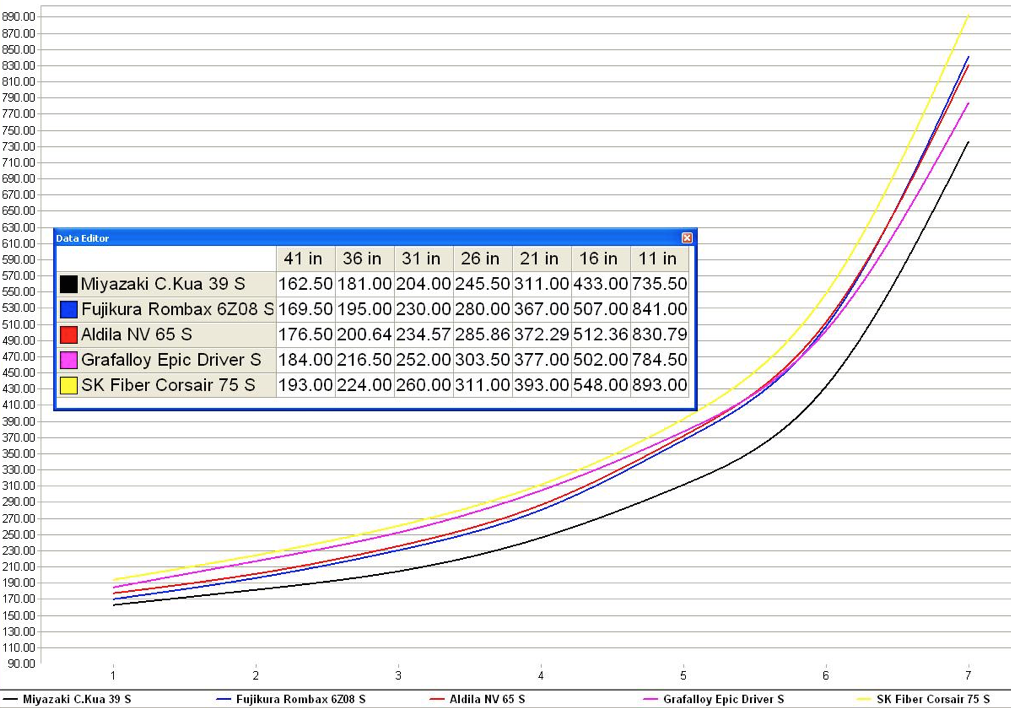
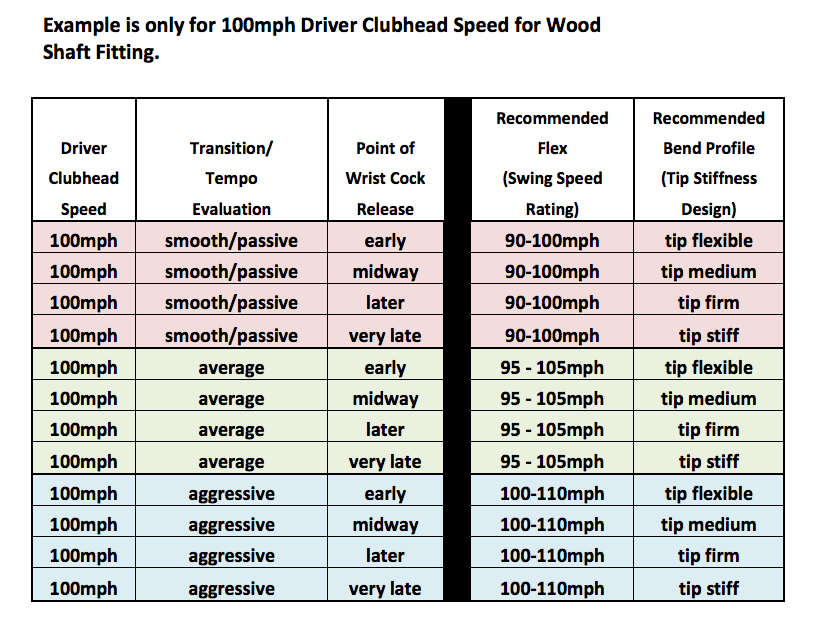
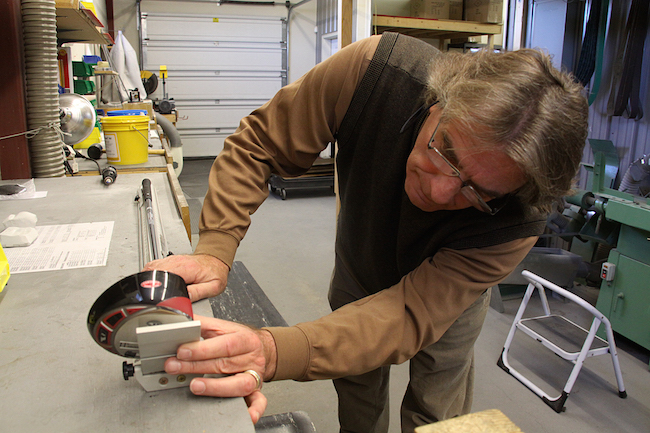


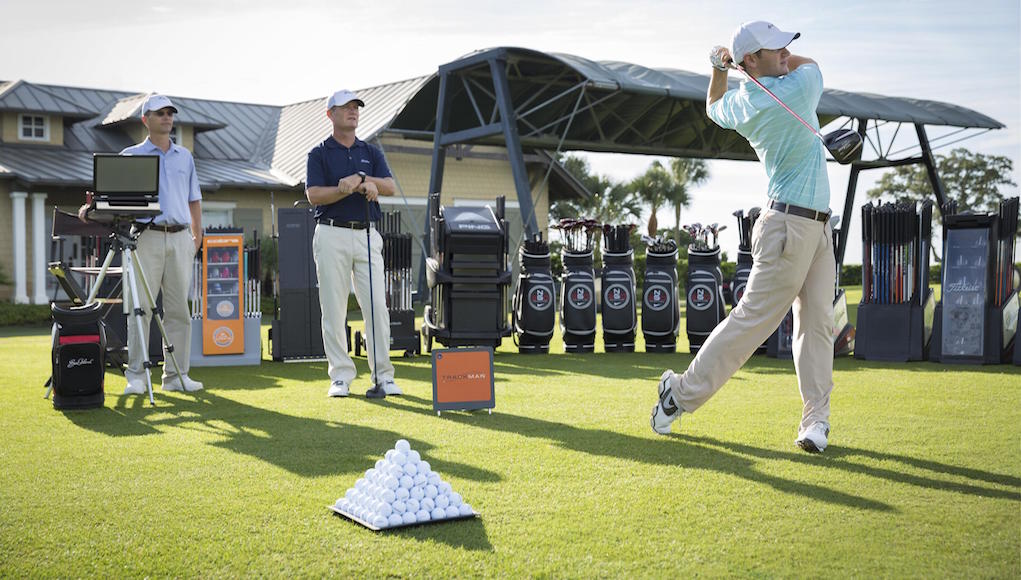
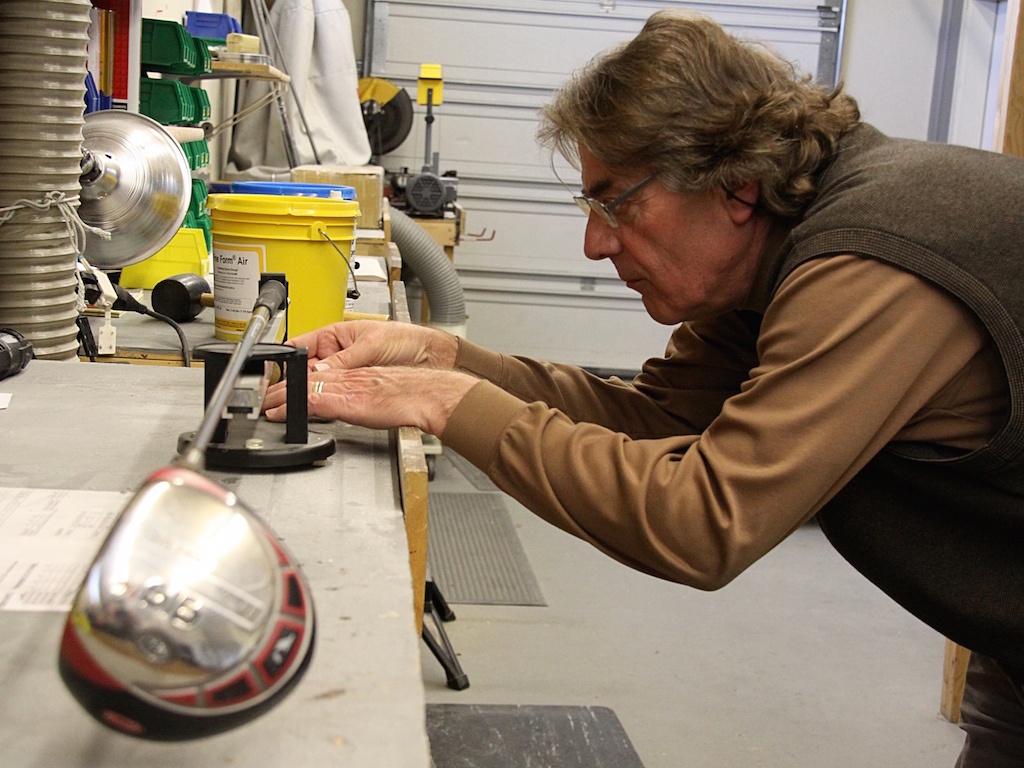
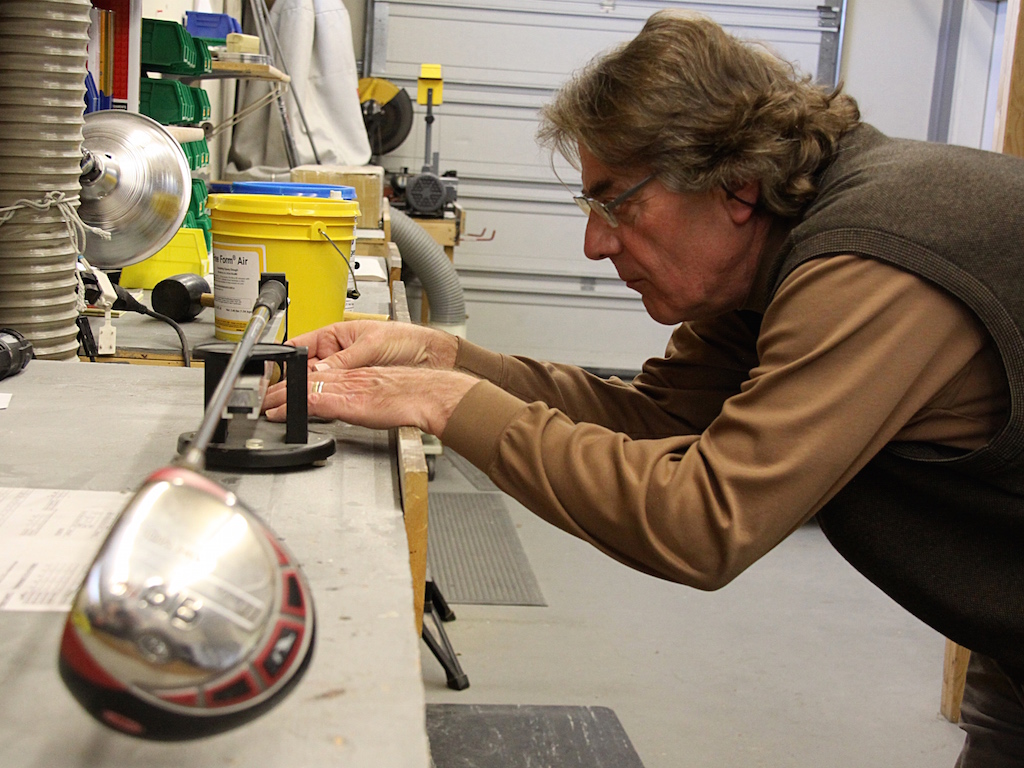
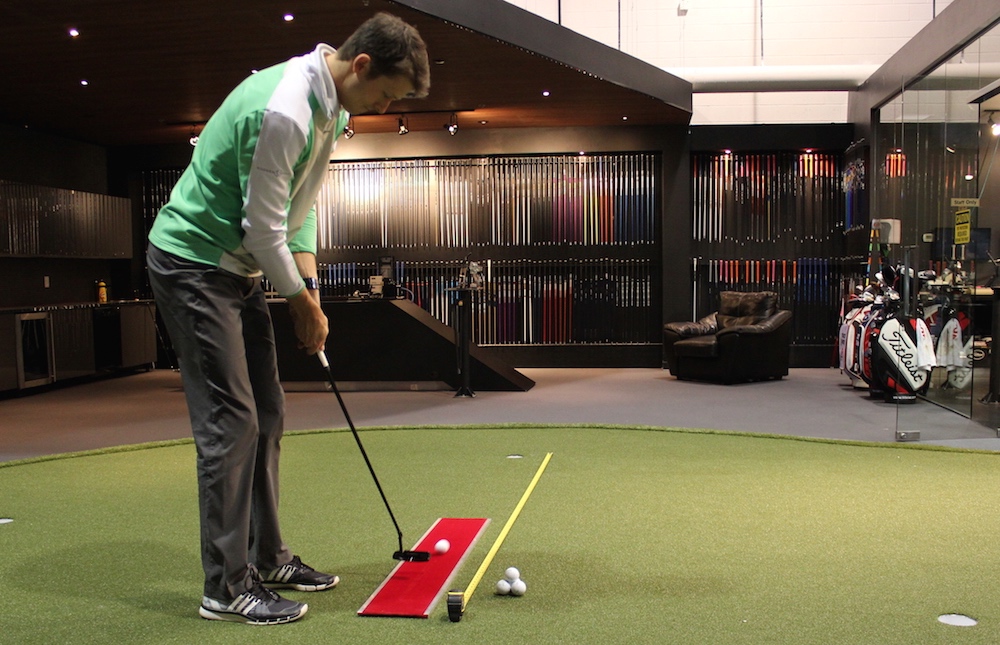
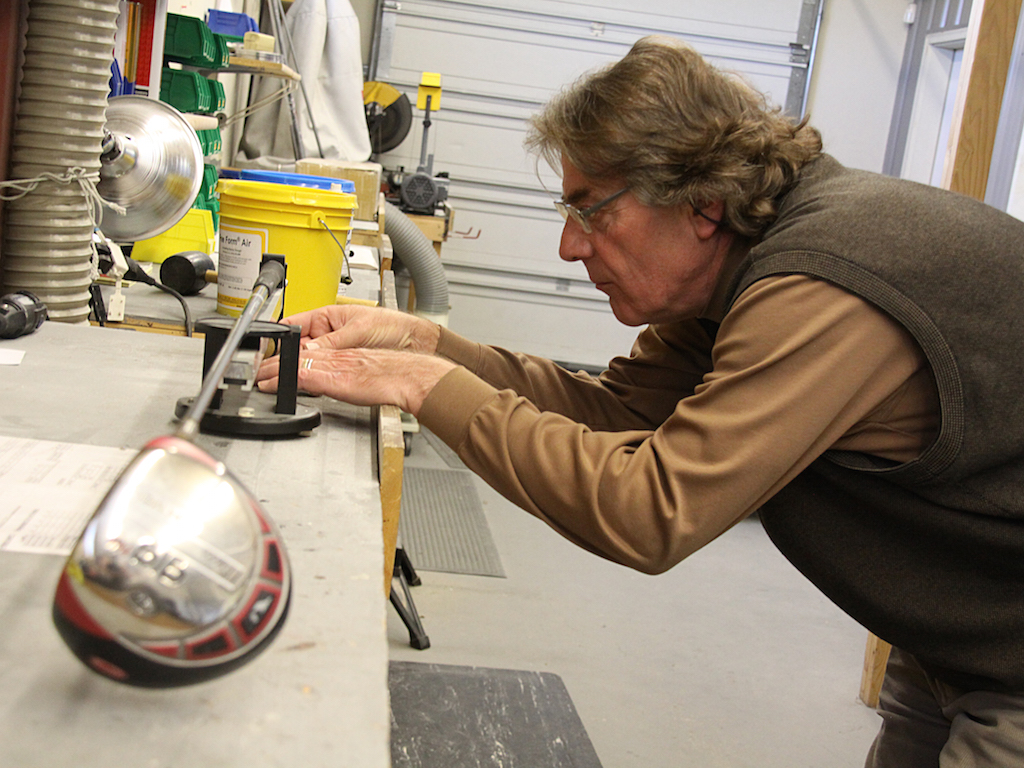
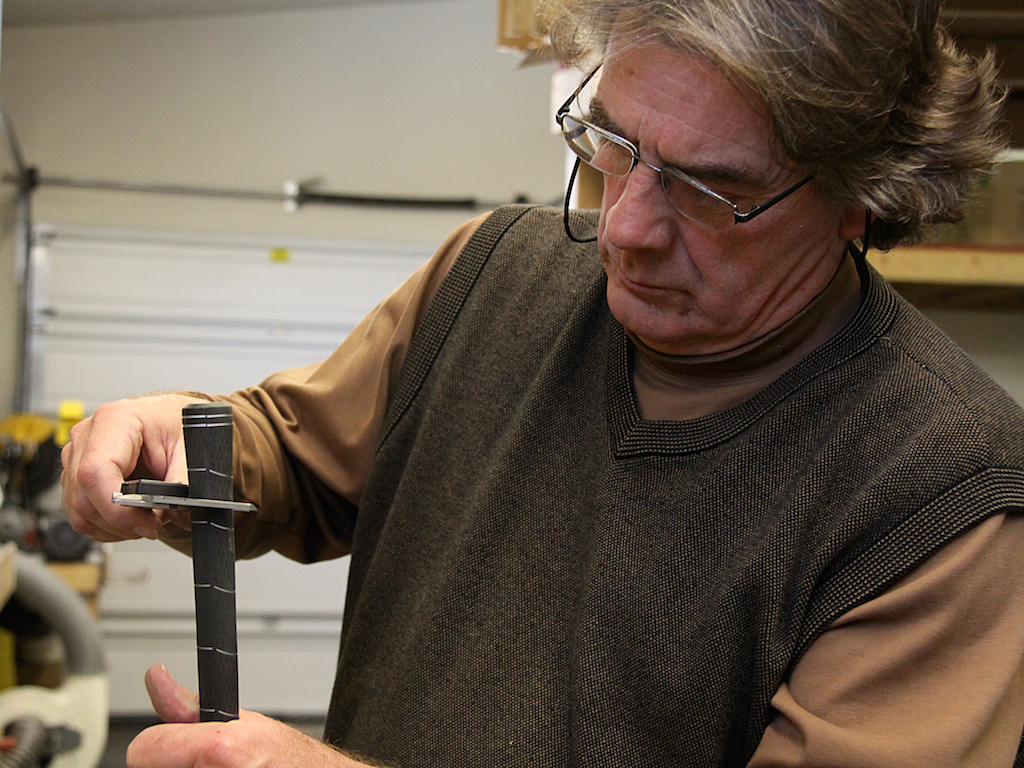













today tv schedule
Oct 7, 2023 at 5:53 pm
I would recommend using a stiffer shaft flex for a higher launch.
Jim M.
Mar 24, 2015 at 10:56 am
Hello Tom,
I’m curious if you have any thoughts or opinions on the accuracy/validity of the Golfworks “MPF Shaft Ratings”? Up to this point it’s the only shaft rating guide that I’ve used, and have found it to be better than going about shaft purchases blind, but not something I’d use and bet the house on.
Since I’m just up in Boulder, maybe we can discuss the fascinating World of Shafts in person someday. Thanks for your articles, really enjoy hearing your perspective!
Tom Wishon
Mar 24, 2015 at 4:53 pm
Jim M
Sorry, but I don’t think very much of the Golfworks MPF shaft ratings. If you take a look at the clubhead speed ranges that they advise, you will see that every R flex is rated for the same 77-92mph driver speed, every S for the same 93-107 swing speed and so on. In doing this they are showing they are not aware of the fact that there is no standard for letter flex as I showed in that bend profile graph in the article. Also, having a 14-15mph swing speed range within the same flex is too large. While there are some areas for which I hold high regard for Golfworks, this is not one of them and the information is not very good for helping golfers find the best shaft for their swing characteristics. That graph you see in the article comes from my Bend Profile software program in which we now have something like 3,000 different shafts in the data base. Many of the clubmakers use this as their guide for empirically comparing the full length stiffness design of shafts so they know much more precisely how one shaft compares to the other. We certainly do not have all the shafts in the data base because this is a monumental task to try to get samples of as many shafts as we can. We certainly cannot buy them all. So we ask the shaft makers to submit samples of their shafts for us to measure and put into the data base. And as happens, some of the shaft makers choose not to participate for whatever reasons. But as it stands now, this software program is the most extensive data base of shaft relative stiffness measurements for clubmakers or golfers to have to be able to make better empirical comparisons.
Jim M.
Mar 25, 2015 at 11:39 am
Thanks for the reply Tom. I was under the impression Golfworks had a bit more sophisticated analysis at play, but as you point out, my impression was false.
I’ve had a couple “clunker” purchases recently, and things are making a lot more sense why now!
Devon
Mar 18, 2015 at 10:54 pm
Hi Tom:
Thanks again so much for posting. Incredibly valuable knowledge. It seems from reading your posts, I have been misunderstanding the role of shaft flex (and it seems I would not be alone!). I have always thought the main consideration in choosing a shaft is the trade-off between distance and accuracy. Want more distance, get a flexible shaft that will bend more and load the club head more like a sling shot catapult. Want more accuracy, get a stiffer shaft that won’t bend and twist as much, and thus provide a more consistently square face at impact. If you have a fast club head speed like I do (115+ for driver), but a miss will put you three fairways over, get the stiffest shaft you can find. When I read your posts, however, I don’t see any mention of stiffness impacting accuracy (hitting it straight). I see mention of stiffness affecting two main areas: 1) trajectory, spin rate, and launch angle (for harder swinging, late releasing folks, which I think I would also be); and 2) an individual preference for the feel of the club either loading or not loading.
Have I been wrong all these years in thinking the main consideration in choosing stiffness is the trade-off of distance and accuracy?
Tom Wishon
Mar 20, 2015 at 3:47 pm
Devon:
Thanks for asking your question so I could have the chance to answer because this is a very good question since it has been said over the years that stiffer means more accurate and flexible means more distance. This concept has its roots from way back, long before serious research was done to find out precisely what the stiffness design of a shaft really does for golfers with different swing characteristics.
It fooled Karsten because those who remember Ping clubs from the 70s and 80s recall that he always used one very stiff flex in all the clubs Ping made back then, from this belief that going very stiff was better because it offered better accuracy. But once he and his engineers discovered the real performance contribution of flex and bend profile, Ping did move away from this original very stiff philosophy to make their clubs with different flexes to better match to the clubhead speeds of golfers.
Where this stiffer is more accurate and flexible is more distance belief came about was from way back when really good players would use different flex shafts – not from regular golfer testing with different stiffnesses. When a high clubhead speed player with a later release uses a MUCH more flexible shaft, the forward bending of the shaft coming into impact not only increases the dynamic loft to result in a higher launch/more spin/higher flight, but a greater amount of forward bending also causes the face to close a little bit too. So these higher speed, late release players would see that they had a tendency to draw or even hook the ball a little more when using a much more flexible shaft. Changing to a stiffer shaft reduced the amount of forward bend on the shaft at impact, which in turn lowered launch/spin/trajectory AND reduced the tendency of the forward bend to close the face. So from this came the belief that stiffer was more accurate.
Not so with avg to regular players because without a higher speed AND later release, the shaft cannot come to impact in a forward bend position to bring about any real change in launch/spin/trajectory or any change in the face angle position.
The concept that more flexible meant more distance came from the fact that when a higher speed, later release player used a more flexible shaft, often times the higher launch resulted in more carry distance, particularly if the player was using too little loft on the driver for his speed and his angle of attack. But here again, this does not work for early to midway release players because the shaft can’t be in a forward bend position at impact with an early to early-midway release and only gets to that point as the release gets a little later and later in the downswing.
So to a small extent, going stiffer can have a small effect on accuracy, but typically only if the player were using a shaft that was too flexible for his speed and downswing force/tempo. Thing is, it is NEVER a good thing to play with a shaft that is stiffer than what your speed and downswing force dictates because that has the effect of making impact feel more dead/boardy and also can affect the golfer’s swing timing, tempo, and release in an adverse manner.
Final point – ACCURACY is far, far more a product of getting the right fit for your length, the shaft weight, the headweight, the face angle. The shaft flex is a distant and only slight contributor to that.
Marty Neighbour
Mar 20, 2015 at 4:49 pm
Great read. Thanks Tom.
James
Mar 18, 2015 at 12:40 am
you could write a book…and that book would be called “Bullsh*t”…..unless you are a low single digit handicap player it doesn’t amount to a hill of beans what kind of shaft you are using. whether its a stiff or extra stiff or you pay $1000.00 for some after market shaft or use a made for shaft or some proprietary shaft. your swing just isn’t going to be consistent enough to see and difference. and they guys whos swings are consistant enough? its really just fine tuning…and I mean FINE tuning…
Tom Wishon
Mar 18, 2015 at 10:41 am
JAMES
I have said many times in my books and articles that golfers have to have a higher clubhead speed and mainly a later release before differences in the shafts’ stiffness design will begin to show an effect on changing the launch angle, trajectory and spin of the shot. So if you assume that only low single digit handicappers have a higher speed with late release, then you’re right – at least from a launch angle, trajectory and spin standpoint of performance related to different shaft stiffness designs.
On the other hand, the stiffness design also can have a very big effect on swing tempo/timing/rhythm and on solidness of impact feel. And these elements of indirect performance from the shaft’s stiffness design can most definitely be perceived by high single digit, middle digit and even some higher handicappers depending on how much golf they have played.
Pretty much most golfers who have played a lot can notice when a shot feels dead or lively when the ball leaves the face. When a shaft is too stiff for a golfer, the feeling of impact in the center of the face becomes more “dead” or “boardy”. And while that won’t affect actual ball speeds or shot characteristics, it most certainly can affect the golfer’s sense of feel to the point that he begins making worse swings and becomes more inconsistent as he fights with this sense of dead impact feel from the shaft being too stiff. This most certainly is an element related to stiffness design that more than just low single digit players can perceive.
Yes, no question, and as I have said before, for the golfers with avg to slower speeds who also have an early to early-midway release, the elements of length, loft, lie, face angle, shaft weight, total weight, swingweight, head design, set makeup and grip size will for sure contribute much more to game improvement than will the stiffness design of the shaft. But even so, this matter of getting the right flex for avg golfers so their sense of timing/rhythm is a little better, and very much so the feeling of impact is more solid are important elements related to the stiffness design that have to be observed for these less skilled players.
Justin
Apr 8, 2015 at 12:37 am
Hi Tom,
I’ve been into clubfitting for a few years now, and am a firm believer in the Common Sense Clubfitting system you developed. My question about this thread, with the importance of flex for less-skilled players, is: how would it matter?
What I mean is, when an early unhinging of the wrist angle happens, doesn’t all of that flex go out the window (so to speak)? Am I correct in believing the shaft flexes and returns to straight well before the clubhead gets to the ball? If so, would the flex really have that much of an effect on “feel”?
Thanks for all you do,
Justin
Dennis
Mar 15, 2015 at 9:28 am
Seems hard to believe you can discuss shaft flex without mentioning splining and whether the shafts were spline for maximum or minimum flex.
Tom Wishon
Mar 15, 2015 at 6:12 pm
Dennis
Like I said in the opening paragraph, one could easily write a book about all the elements related to shafts, shaft flex, bend profile and the fitting thereof. Shaft spine alignment can be important to SOME players depending on their swing characteristics, but by no means is it a critical element for ALL golfers. With the limited space I have for each piece, I have to award a priority to covering information that will be pertinent to the largest segment of golfers and spine alignment/orientation does not fit that priority. FYI so I don’t leave this too much in the dark, I’ll leave you with two basics about it – 1) far fewer shafts today exhibit asymmetry properties for which a spine/asymmetry check and realignment is necessary, 2) shaft spine alignment/orientation becomes more important as the clubhead speed gets higher, as the downswing move becomes more aggressive and as the release becomes later and later in the downswing.
Charles
Mar 13, 2015 at 2:19 pm
I’ve read a lot of articles from club fitters about shaft flex and there are folks saying “You should play the softest shaft you can control”, while other guys say “You should play the stiffest shaft you can get the ball airborne”. I really would like to know your opinion about that. Let’s say that when you are fitting someone you see by the numbers that there are two shafts that match the player’s swing, but one is stiffer than the other, what would be your recommendation? Thanks
Tom Wishon
Mar 13, 2015 at 8:06 pm
CHARLES
Depends on the golfer’s swing characteristics. The higher the clubhead speed, the more forceful the transition and tempo and the later the release, the more it would be better to err on the side of being a little bit too stiff than too flexible. But the lower the speed, the more passive the downswing force and the earlier the release, the better it would be to err on the side of being a little too flexible than too stiff.
Reason is that higher speed, more forceful transition/tempo and later release are all swing characteristics that make the shaft bend more in the swing. So as the player has the ability to bend the shaft more in the swing, the better it would be to err on the side of being a little too stiff. However, fitting the shaft flex/bp always should involve asking the player if he has a preference for the bending feel of the shaft based on experience in the game. if so, then you really have to keep this in mind when making final decisions for the flex/bp. So if the player has preferred shafts that are stiffer than what his swing characteristics might otherwise dictate in a fitting analysis, then you have to err on the side of being a little more stiff. And vice versa too.
Marty
Mar 13, 2015 at 12:20 am
Link to the reference
http://www.wishongolf.com/forum/viewtopic.php?f=1&t=12641
RP Jacobs II
Mar 12, 2015 at 9:22 pm
Great article Tom!!
Stay well my Friend 🙂
Golfingly Yours,
Richard
Sean
Mar 12, 2015 at 3:10 pm
I have three different flexes in my bag: light, regular, and stiff. Works for me.
marty
Mar 14, 2015 at 4:20 am
I thought I was the only weirdo who does this. Hahahahah
Chris C
Mar 12, 2015 at 2:33 pm
I seem to recall that Mr.Wishon has previously suggested that, for those who release the club early, shaft flex is not a significant factor in fitting. I believe that he noted that all of Ping’s early irons came with stiff flex shafts. If I have recollected correctly, Mr. Wishon might actually concur with Mr. Crossfield’s assessment. At least with regards to early releasers.
gunmetal
Mar 12, 2015 at 12:35 am
Tom,
Have you checked out Mark crossfield’s YouTube series on ‘shaft flex does it matter’? Really interesting on how miniscule the differences in performance are even from x to L let alone S to R.
David
Mar 12, 2015 at 6:25 am
Please don’t tell me you’d believe Mark Crossfield over Tom Wishon. Shaft flex obviously matters, Mark and his friends are all low players, try testing on mid-high handicappers and he’d see a noticeable difference.
Rich
Mar 12, 2015 at 8:42 pm
I think Mark Crossfield’s video makes sense. He has the data to back it up as well. Yes they are low markers but there are a lot of guys out there that swing at the same speed as MC (roughly 150 ball speed with a driver) so it would seem quite relevant to me.
Marty
Mar 13, 2015 at 12:02 am
Actually I believe Tom himself has stated that shaft flex matters very little with an early release swing and matters mostly on late to very late release swing. With early release swings, the club has already released and returned back to straight before impact therefore negating the flex
Mat
Mar 12, 2015 at 1:49 pm
I’m just shaking my head over that comment…
Tom Wishon
Mar 13, 2015 at 7:58 pm
Gunmetal
There are two possible ways that the shaft can have an effect on performance. 1) as clubhead speed gets higher AND with it, as the release gets later, the shaft will show an effect on the launch angle, trajectory and spin. But the other side of this is also the fact that as clubhead speed gets slower AND with it, the release happens earlier, the shaft cannot have any real effect on LA, Traj and spin. This is because the early release causes the shaft to go into its forward bending action too soon before impact so by the time the head gets to the ball, the shaft has rebounded back to straight and thus can’t affect LA, Traj and spin. Add to this the fact that slower speed means any potential change in the LA and spin are far less evident.
2) the other way the flex/bend profile can affect performance is when a golfer happens to have a very distinct sense of FEEL for the bending action of the shaft, when the flex/BP is dead on right in the wheelhouse of the golfer’s sense of feel, this means his timing for his release is as good as it can be, which in turn means he will reach his absolute highest clubhead speed as well as best timing and rhythm in the swing.
But not all golfers have a definite sense of feel for the bending action of the shaft. Some do, many don’t. And this is something that while usually more in the realm of better players, it is still possible to find a less skilled but experienced player who does have a real sense of feel for the shaft. In such cases even though the less skilled player may not have the speed or release to make the shaft elicit much effect on the LA, traj and spin, if he does have a very refined sense of feel for the shaft, this means getting him into the right flex/bp helps with his swing tempo, timing and rhythm.